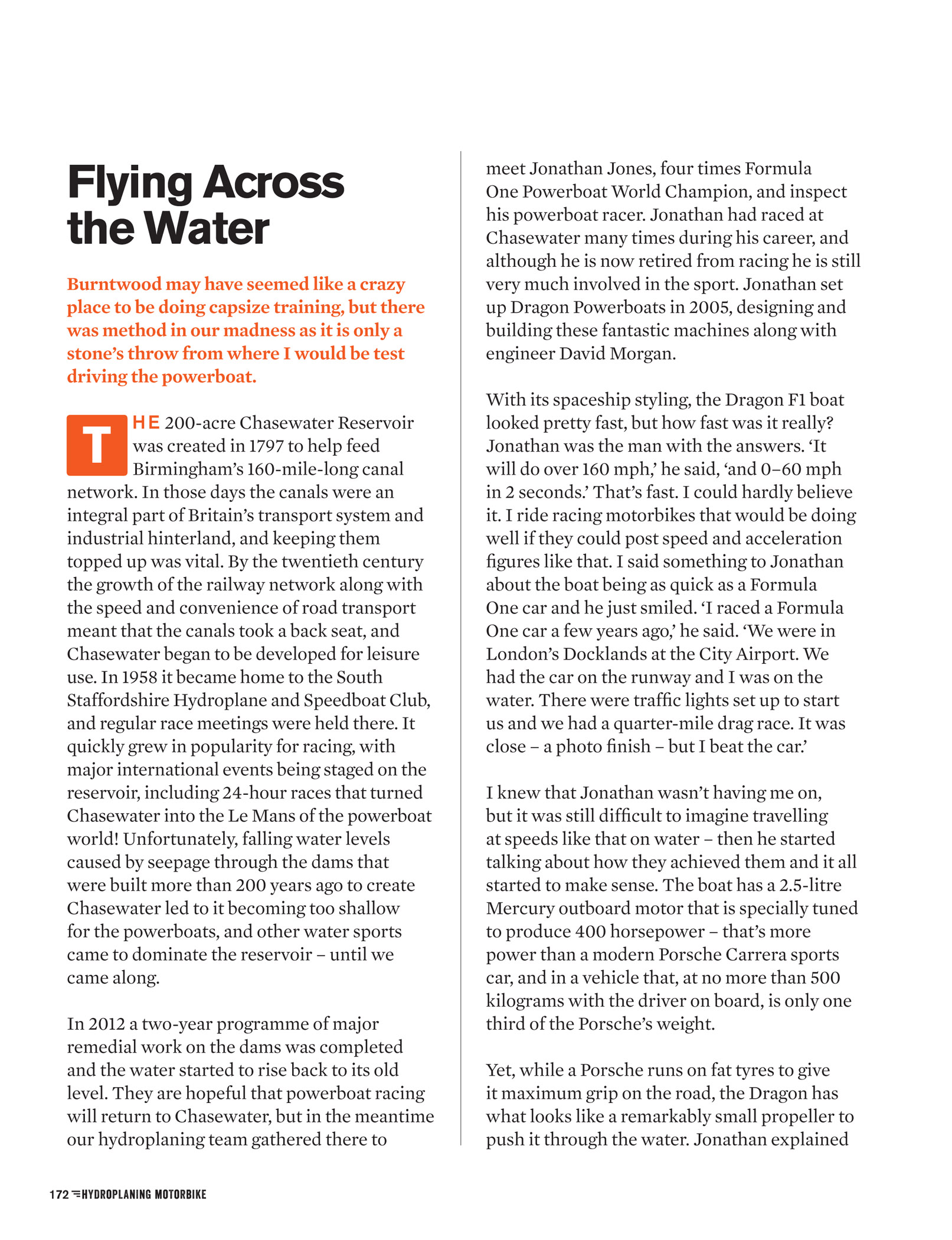
Flying Across
the Water
Burntwood may have seemed like a crazy
place to be doing capsize training, but there
was method in our madness as it is only a
stone’s throw from where I would be test
driving the powerboat.
HE 200-acre Chasewater Reservoir
was created in 1797 to help feed
Birmingham’s 160-mile-long canal
network. In those days the canals were an
integral part of Britain’s transport system and
industrial hinterland, and keeping them
topped up was vital. By the twentieth century
the growth of the railway network along with
the speed and convenience of road transport
meant that the canals took a back seat, and
Chasewater began to be developed for leisure
use. In 1958 it became home to the South
Staffordshire Hydroplane and Speedboat Club,
and regular race meetings were held there. It
quickly grew in popularity for racing, with
major international events being staged on the
reservoir, including 24-hour races that turned
Chasewater into the Le Mans of the powerboat
world! Unfortunately, falling water levels
caused by seepage through the dams that
were built more than 200 years ago to create
Chasewater led to it becoming too shallow
for the powerboats, and other water sports
came to dominate the reservoir – until we
came along.
T
In 2012 a two-year programme of major
remedial work on the dams was completed
and the water started to rise back to its old
level. They are hopeful that powerboat racing
will return to Chasewater, but in the meantime
our hydroplaning team gathered there to
172 HYDROPLANING MOTORBiKe
meet Jonathan Jones, four times Formula
One Powerboat World Champion, and inspect
his powerboat racer. Jonathan had raced at
Chasewater many times during his career, and
although he is now retired from racing he is still
very much involved in the sport. Jonathan set
up Dragon Powerboats in 2005, designing and
building these fantastic machines along with
engineer David Morgan.
With its spaceship styling, the Dragon F1 boat
looked pretty fast, but how fast was it really?
Jonathan was the man with the answers. ‘It
will do over 160 mph,’ he said, ‘and 0–60 mph
in 2 seconds.’ That’s fast. I could hardly believe
it. I ride racing motorbikes that would be doing
well if they could post speed and acceleration
figures like that. I said something to Jonathan
about the boat being as quick as a Formula
One car and he just smiled. ‘I raced a Formula
One car a few years ago,’ he said. ‘We were in
London’s Docklands at the City Airport. We
had the car on the runway and I was on the
water. There were traffic lights set up to start
us and we had a quarter-mile drag race. It was
close – a photo finish – but I beat the car.’
I knew that Jonathan wasn’t having me on,
but it was still difficult to imagine travelling
at speeds like that on water – then he started
talking about how they achieved them and it all
started to make sense. The boat has a 2.5-litre
Mercury outboard motor that is specially tuned
to produce 400 horsepower – that’s more
power than a modern Porsche Carrera sports
car, and in a vehicle that, at no more than 500
kilograms with the driver on board, is only one
third of the Porsche’s weight.
Yet, while a Porsche runs on fat tyres to give
it maximum grip on the road, the Dragon has
what looks like a remarkably small propeller to
push it through the water. Jonathan explained